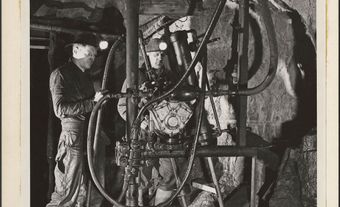Collective Bargaining
Collective bargaining is a method of jointly determining working conditions between one or more employers on one side and organized employees on the other. The normal outcome is a collective agreement outlining terms and conditions of employment as well as issues such as union recognition, grievance procedure and special committees.
In North America a union must be certified as a bargaining unit; ie, prove it has the support of an absolute majority (50% + 1) of the employees before it may represent them in collective bargaining. Government administrative bodies have the power to verify the representative nature of the unions and may call for a vote to determine whether a majority of employees in a specifically defined bargaining unit wish to be represented by a union. In Canada, the Provinces have jurisdiction over labour matters except for some industries which are regulated by the federal government like transportation and broadcasting.
Collective bargaining involves two parties that have conflicting as well as converging interests. Conflict arises out of the clash of economic interests between workers seeking job and income security and employers seeking to obtain organizational effectiveness. Because this conflict is viewed as inherent in the structure of the employment relationship, overt conflicts in the form of strikes and lockouts are considered as a logical outgrowth of a system that seeks to allow the parties to pursue their pluralistic goals. These conflicts, however, are not pathological. They are limited in scope and frequency because neither party can achieve its goals without the other and because the parties share a number of common goals, such as health and safety at work, for example.
The negotiating process comprises four sub-processes: distributive bargaining, integrative bargaining, shaping intergroup attitudes, and managing internal differences. Distributive bargaining has the function of resolving pure conflicts of interest. It serves to allocate fixed sums of resources ("dividing the pie") and has a "win-lose" quality. Integrative bargaining has the function of finding common or complementary interests. It serves to optimize the potential for joint gains ("expanding the pie") and has a win-win quality. Shaping intergroup attitudes refers to the way the parties influence attitudes (positive or negative) toward each other and the underlying norms and tone of their relationship. Finally, managing internal differences serves to either build consensus or encourage diversity of views within the interacting organizations.
All provincial governments as well as the federal government have accepted the idea that it is in the public interest to permit and even encourage collective bargaining. In order to help the parties resolve their differences, these governments offer conciliation or mediation services.
Although most unionized employees have a legally recognized right to strike, sometimes precisely defined waiting periods must be observed before a strike or lockout may begin. Certain groups, forbidden the right to strike, must submit their dispute to binding arbitration by a tribunal whose decision is final. Others must maintain a minimum number of employees at work during a work stoppage in order to provide for essential services. In some cases, governments have suspended strikes or lockouts, when they felt that such conflicts were endangering the public interest.
Anything not contrary to law may be written into a collective agreement. In North America, collective agreements must have a specific duration which cannot be less than a year. Most jurisdictions do not impose a maximum duration, but the average length of a contract is approximately three years, although contracts covering longer periods became more frequent in the mid-1990s.
Union achievements at the bargaining table often become part of legislation. After an autoworkers' strike in 1947, the basic principle of union recognition (commonly called the "Rand Formula") was established. Medical insurance in union contracts preceded national medicare, pensions preceded universal pension plans, safeguards against discrimination preceded human rights legislation.
See also STRIKES, LOCKOUTS and ARBITRATION.

 Share on Facebook
Share on Facebook Share on X
Share on X Share by Email
Share by Email Share on Google Classroom
Share on Google Classroom


